Sea Spiders?!
Yes – there are spider-like animals in the ocean!
Globally, more than 1,300 species have been identified.

Yellow Hairy Sea Spider likely grazing on the polyps of Red Soft Coral.
But, even though they are invertebrates with jointed legs (arthropods) and most have 8 legs, they are not spiders (arachnids). They are also not crustaceans. They are classified into the a distinct group of arthropods – the chelicerate subphylum. The particular species you see in these images, belongs in the subgrouping (order) called the “pantapoda”. That’s Latin for “all legs”. It’s a good name since this species has almost no abdomen.
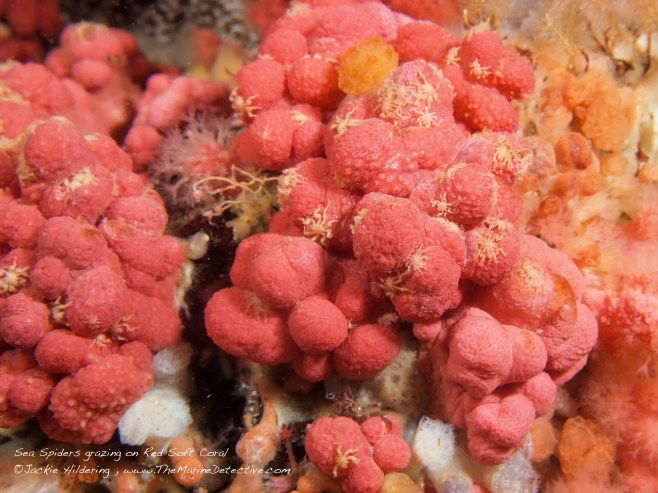
“All legs” indeed. Yellow Hairy Sea Spiders on retracted / deflated Red Soft Coral.
They have a mouth part called a proboscis, a flexible tube that they use to mix digestive chemicals with their food and then suck it up.

Yellow Hairy Sea Spider appears to have “decorated” himself with algae.
Some species have additional leg-like appendages near their mouths. Often only the male has these structures so that they can take care of the eggs by carrying them.
The species pictured here are those I see most often around northeast Vancouver Island and they are only about 1 cm across. They have been given the common name “Yellow Hairy Sea Spider” (Tanystylum grossifemorum).
The hairy parts are believed to help the animals feel and sense chemicals.
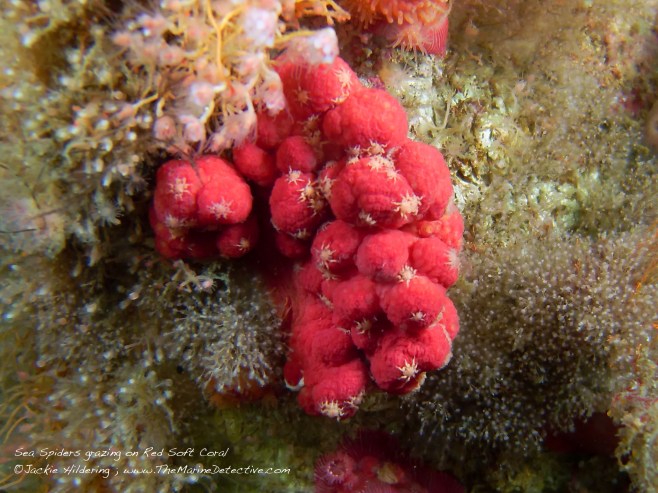
I have only ever seen this sea spider species on Red Soft Coral colonies (Gersimia rubiformis). They appear to feed on the bushy polyps of the soft coral. As defence, the polyps can retract and have stinging cells but this seems to do little to deter the sea spiders.
One of the things I find fascinating about sea spiders is that they have a very thin external skeleton (exoskeleton) and as a result don’t need a respiratory system; they can “breath” through their skins.
Nudibranch species that also feed on Red Soft Coral include the Diamondback Nudibranch (Tritonia festiva to 10 cm) and the Orange Peel Nudibranch (Tochuina gigantea to 30 cm).
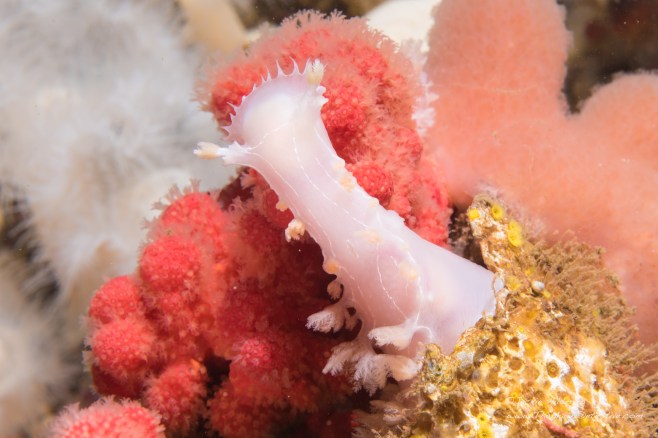
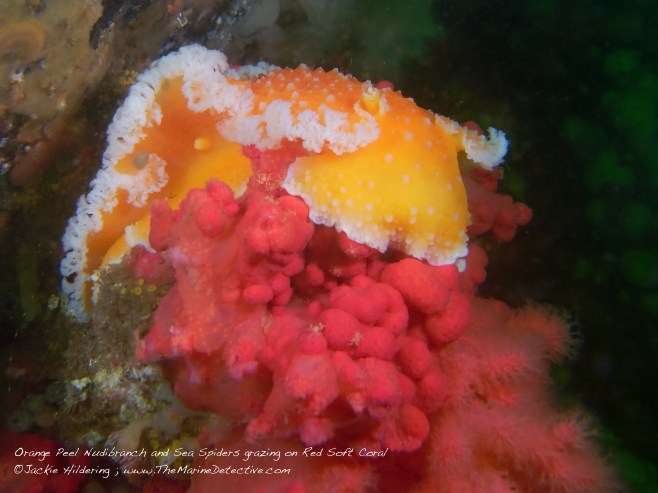
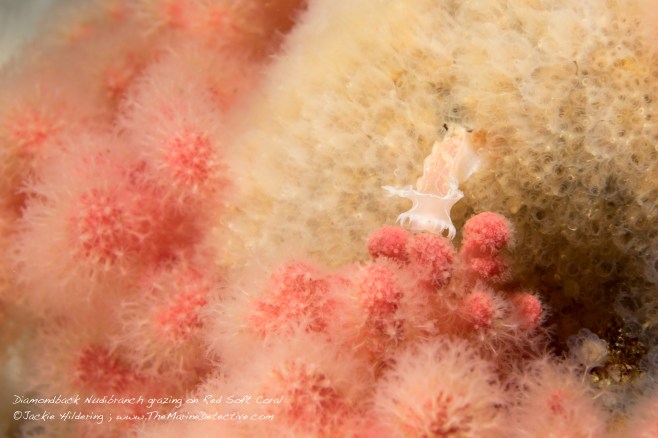
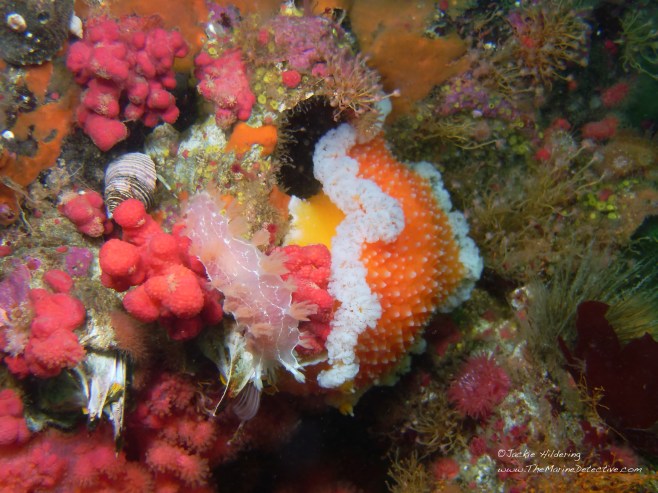
As an aside, there is also a fascinating association between Red Soft Coral and Basket Stars (Gorgonocephalus eucnemis). See below. Basket Star embryos develop INSIDE the polyps of the soft coral! It’s also thought the embryos feed on the soft coral’s eggs which brood inside the parent. When juvenile Basket Stars emerge from the coral’s polyps, they hang onto the outside till about 3 mm in disk diameter. Then, they crawl onto an adult Basket Star, shuffling off when approx. 5 cm. When adult Basket Stars’ 5 seeming infinitely branched arms are fully outstretched, width is up to 75 cm. Age is up to 35 years.
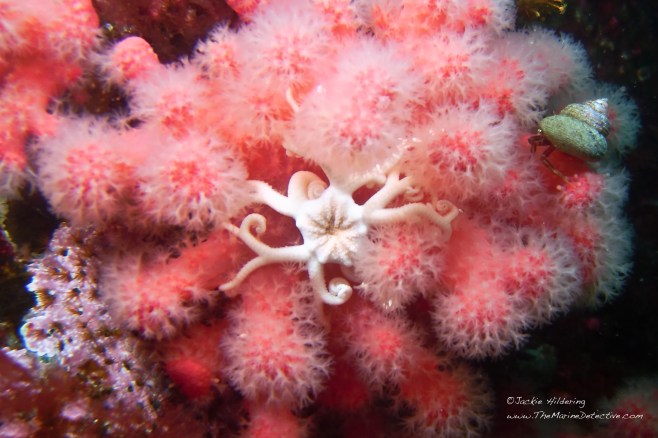
Sources:
- Berkley University; Introduction to Pycnogonida.
7 Responses to “Sea Spiders?!”
They are beautiful .
Hello Nicole. So glad that you have an appreciation of them! I was afraid that some readers might have an “Ew” like response. Then, here you come with the first comment sharing the perspective that they are beautiful. Thank you!
I didn’t know our waters were so beautiful …I only ever saw ..dark cold water and a few flying whales .
Hello Nicole, So appreciate the feedback and knowing that this is reaching students. It is such a huge privilege to have the experiences I do on and under the ocean, I want to open this window to others and it is so valuable to know that even for locals, this may be happening.
Wow I didn’t know what to expect but these creatures are pretty in their own special way! Thumbs up for the awesome pictures!
nice work Jackie!
I think your site is awesome ..I work at a school and have shown this to students .
Nice pictures and just the right amount of info .